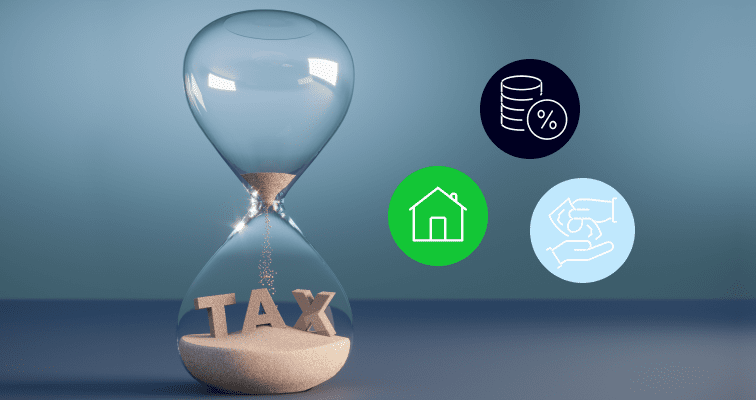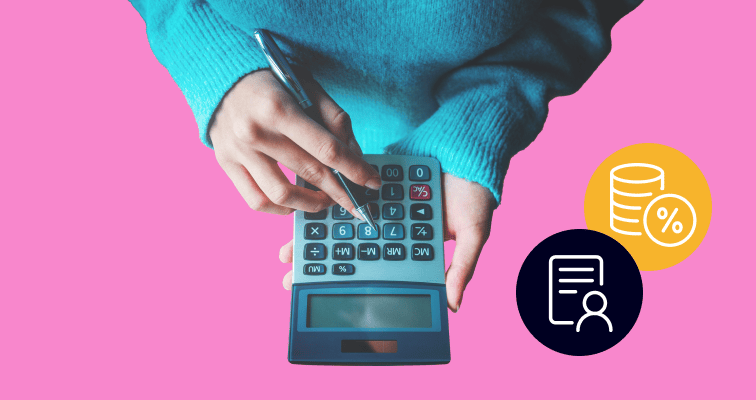When you sell shares or other financial assets, you may need to pay capital gains tax (CGT) on any returns. Discover what CGT is, how it works in Italy, and what you need to know as an investor.
It only takes minutes to set up an account with a trusted brokerage platform and to start buying financial instruments such as stocks, bonds, ETFs, currencies, and cryptoassets. After investors in Italy book trades and close them out, however, any returns they make can be subject to capital gains tax (CGT).
This guide will help you to navigate the sometimes tricky elements of a capital gain, explain how to calculate your liabilities, explore how CGT might impact your investment strategy, and discuss strategies to minimise your tax burden.
What is capital gains tax (CGT)?

Capital gains tax is levied on returns generated from the sale of capital assets such as shares or property.
The Agenzia Entrate determines which assets are subject to this tax.
While the specifics of taxable assets can be complex, the fundamental principles are straightforward. If you sell a capital asset within the scope of capital gains tax for a price higher than its purchase cost, you may be obligated to pay tax on any returns you make.
Understanding Italy’s CGT requirements is important, as making accurate filings with the Agenzia Entrate tax authority is a legal requirement. The amount owed and necessary filings depend on factors such as asset type and your individual tax profile.
Staying informed about changes, such as the guidance published on October 27, 2023 which clarified the taxation of cryptoassets, is essential to keep up-to-date with the Italian tax landscape.
Tip: Failure to comply may result in fines and penalties.
The fact that not all capital assets incur capital gains tax — adds an additional layer of complexity to the process of calculating, reporting, and paying CGT, but the core principles are relatively straightforward.
The starting point is an event where you sold a capital asset that is within the scope of CGT for a price higher than that which you paid for it. You could be required to pay tax on those profits.
What assets are subject to capital gains tax?
All investors should be aware of which of their assets are subject to CGT.
Tip: Capital gains are generally taxable, even if they do not arise from speculative intent or a business.
While not an exhaustive list, investors usually have to pay capital gains tax on profit made from the following assets:
- Financial assets: including stocks, bonds, cryptoassets and ETFs
- Business interests: Sale of a business or part of a business
- Real estate: including both residential and commercial properties (although there are certain situations where CGT does not apply).
- Personal property: including a range of items such as artworks, antiques and collectibles
- Intangible assets: Such as contractual rights, licences and leases
Most gains on assets that fall into the scope of CGT are taxed at a rate of 26%, but some government bond investments are taxed at a lower CGT rate of 12.5%.
There are also some other investments that are exempt from CGT:
- Some Italian investment funds
- Property held for over five years
- Property held for under five years, but that has been occupied for more than 50% of that time.
- Dividends received in the form of cash. These fall out of the scope of CGT, and are treated instead as “income” and taxed separately.
Selling a CGT-applicable asset will automatically trigger a CGT event, and you will be required to include the details of the proceeds in your tax return for that financial year.
For active investors, those new to investing, or anyone with a diversified portfolio of assets, there may be a benefit in sourcing advice from an experienced tax professional to ensure that you comply with your CGT liabilities.
How does CGT impact my other investments?

The most obvious way that CGT will impact an investment portfolio is that net gains on certain investments will be lower than what you might expect if you only consider the prices at which you bought and sold.
Understanding how CGT works could influence your overall investment strategy and the types of assets you buy. For example, the lower CGT rate that applies to certain, long-term property holdings, could make investing in them appear more attractive.
How do I calculate my CGT?
The capital gain on a financial market investment is calculated by deducting the cost of the initial investment from the revenue generated when it was liquidated. Certain transactional costs, including notary fees, taxes and broker fees, can be deducted from the gross capital gain.
While some individuals will pay CGT at a rate derived from their Personal Income Tax (PIT), the default CGT rate (which is widely applied to most Italian residents) is 26% on any capital gain.
It is possible to deduct a range of transactional costs, including legal fees, broker fees and taxes, from a capital gain. A losing trade can also be offset against gains made on favourable trades.
To calculate your CGT obligations, there are four key stages:
- Calculate your expenditure: The net cost of your investments (including any commissions or fees).
- Establish your net proceeds: The cash received on the sale of the asset, minus fees or commissions.
- Calculate the difference: Subtract the expenditure amount from the proceeds amount to establish the capital gain.
- Check that the 26% default CGT rate applies: It is likely that you will pay the 26% default rate of CGT on capital gains, but it is always worth checking.
How do I report my CGT?
If your investment was facilitated by an intermediary (such as a bank or a broker), it is likely that they will provide services that will help you to report on your CGT obligations.
In certain cases, individuals must file an annual tax return and make payments before the relevant deadlines. They should submit the Modello Redditi PF online form to the Italian tax authorities by November 30 each year.
Tip: Investors can find tips on how to complete the form on the Agenzia Entrate website.
In Italy, tax payments are made in advance, one on June 30 and another on November 30.
- The first payment is set at 40% of an individual’s income tax balance from the previous year.
- The second payment is set at 60% of the previous year’s income tax balance.
On June 30 of the following year (after all filings have been considered and updated), a balancing item is processed, factoring in the advance cash payments and the actual tax liability.
How can I reduce my CGT burden?
While you cannot avoid paying capital gains tax entirely, you can implement strategies to minimise your CGT burden:
- Invest in government bonds: Certain categories of government bonds accrue CGT liabilities at a rate of 12.5%, which is less than half the standard rate (26%) that applies to most other financial instruments.
- Buy Italian investment funds: Italian investment funds are CGT exempt. Such funds can contain a variety of assets, including stocks, which if held outside of a fund structure would have a CGT rate of 26%.
- Use property to your advantage: You can avoid paying CGT on property if you hold it for more than five years, or occupy it for over 50% of the time for which you hold it..
- Utilise capital losses: You won’t win them all. When you sell shares for a loss, use those capital losses to offset your capital gains.
- Speak to a professional: An experienced tax professional can offer personalised advice on how best to reduce your CGT liabilities to optimise returns, while at the same time avoiding the risk of non-compliance. While tax minimisation is legal in Italy, it is important not to engage in tax avoidance, which is a criminal offence.
Final thoughts

CGT is an unavoidable element of being an investor in Italy. It is crucial to become familiar with the way in which CGT works, and understand your related obligations. Consulting a tax professional for bespoke advice can alleviate pressure and concerns, and free up time to focus on your financial goals.
Join eToro today and learn more about CGT, investing in shares and trading in general.
FAQs
- Which capital assets are the easiest to reduce the amount of CGT that is owed?
-
It is hard to reduce your CGT liability on financial instruments such as stocks, as the process is highly automated. There are other ways to minimise the CGT you pay on residential property.
- Where can I get free advice on CGT?
-
There is a lot of free information available online, and reputable brokers will also offer details about how CGT is applied to your account. You may even discover that they have already done a lot of the work for you regarding reporting and paying CGT on your trades.
- What is the “regime patrimoniale dei coniugi”’?
-
This law states that ownership of assets bought by individuals who are married is shared equally between spouses. It applies to movable assets such as crypto and immovable capital assets such as property. There can be CGT implications for both parties, even if one individual decides to sell an asset without the other’s knowledge.
This information is for educational purposes only and should not be taken as investment advice, personal recommendation, or an offer of, or solicitation to, buy or sell any financial instruments.
This material has been prepared without regard to any particular investment objectives or financial situation and has not been prepared in accordance with the legal and regulatory requirements to promote independent research. Not all of the financial instruments and services referred to are offered by eToro and any references to past performance of a financial instrument, index, or a packaged investment product are not, and should not be taken as, a reliable indicator of future results.
eToro makes no representation and assumes no liability as to the accuracy or completeness of the content of this guide. Make sure you understand the risks involved in trading before committing any capital. Never risk more than you are prepared to lose.


